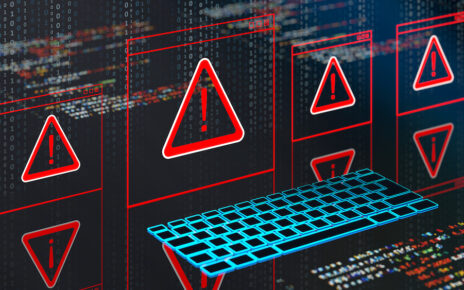A surge in supply-chain assaults targeting open-source software has created a perilous environment for developers who rely on public repositories. In recent days, intrusions into developer accounts have allowed attackers to push malicious packages into npm and other registries, affecting thousands of users who download these dependencies as part of routine software builds. The most recent incidents underscore how quickly trust in open-source ecosystems can be exploited, how intertwined development workflows have become across platforms, and why organizations must tighten authentication, monitoring, and automation practices to reduce exposure. This evolving threat landscape demands heightened vigilance from project maintainers, downstream consumers, and the platforms that host and distribute code.
The wave of open-source supply-chain breaches and how they unfolded
A concerning pattern has emerged in which attackers gain access to legitimate developer accounts and leverage those credentials to publish harmful packages into widely used software registries. In the latest high-profile case, a set of ten npm packages associated with a prominent global talent agency were found to contain malware and were downloaded by thousands of users before detection. The packages have since been removed from the registry, but the incident marked the third supply-chain attack Socket, a security research group, observed on npm within a single week. The rapid succession of these breaches points to a broader, systemic risk within public repositories that host widely reused code.
The attack was carried out by compromising the targeted organization’s GitHub account and using that foothold to publish malicious packages to npm. This sequence highlights the critical role of cross-platform workflows in modern software development. When GitHub Organizations are breached, attackers can leverage connected services, such as GitHub Actions, to automate downstream operations—potentially enabling the publication of new npm packages without requiring a separate login step. The precise mechanics of how the GitHub modification translated into npm publication remain under investigation, and researchers have described the relationship as plausible but not conclusively proven without further forensic evidence. The leading hypothesis suggests that compromised GitHub access allowed attackers to trigger or unlock the publishing of malicious packages via linked workflows, though an alternative scenario involves independent compromises that coincidentally affected both platforms.
Toptal, the organization whose assets were exploited, has not publicly disclosed the exact vector used to compromise its account. Representatives did not respond to inquiries about the breach at the time. The lack of definitive public statements from the affected company has left some questions about the internal controls that could have prevented the breach, particularly around token management and access enforcement for GitHub and related services. This opacity underscores a common challenge in incident disclosure where organizational safety and legal considerations influence what is shared with the public.
The malicious payloads embedded within the compromised packages were designed to operate in two main phases. In the first phase, the code sought to extract the target’s GitHub authentication token and transmitted it to an attacker-controlled endpoint. Those tokens granted attackers persistent, unauthorized access to the target’s GitHub repositories, creating a pathway for continued exploitation beyond the initial compromise. This elevated access could, in turn, facilitate subsequent supply-chain attacks by injecting additional malicious code into future releases or by facilitating further lateral movement within the affected organization’s software ecosystem. By tying credential theft to an attacker-controlled channel, the attackers effectively established a durable foothold that could be exploited across multiple projects and dependencies.
The second phase of the payload attempted to terminate or degrade the victim’s system. The strategy involved commands intended to delete or corrupt the host’s file system, representing a destructive impact aimed at maximizing disruption. Researchers noted that the Unix-like and Windows variants of the payload carried different, platform-appropriate destructive actions. The intention behind these actions was to render the affected machine unusable or significantly damaged, thereby compounding the harm caused by the initial token theft and package compromise. The inclusion of destructive capabilities elevates the risk profile of such supply-chain incidents from a data security concern into an immediate operational threat, as compromised machines can hinder development workflows, corrupt local environments, and introduce new attack surfaces.
In parallel reporting, security researchers published additional findings about other supply-chain attacks that targeted npm users as well as PyPI users. In this separate wave, four malicious packages—three on npm and one on PyPI—were implicated, with downloads surpassing 56,000 collectively. The researchers noted that these packages were designed to covertly embed surveillance capabilities within a developer’s environment. The so-called surveillance malware enabled keylogging, screen capture, fingerprinting, webcam access, and credential theft, transmitting collected data back to attacker-controlled infrastructure. The researchers described the malware as “surveillance-focused,” emphasizing its covert data collection and exfiltration behaviors within what are typically trusted development tools and environments. The existence of these parallel campaigns demonstrates that threat actors are increasingly targeting multiple package ecosystems in parallel, leveraging familiar attack patterns to maximize the chance of compromising downstream software.
The timeline of events shows a pattern of escalating sophistication and speed. A separate incident was reported the previous Friday, in which attackers obtained a credential token used by a developer to authenticate to an npm account and leveraged that token to insert malicious code into three npm packages. The compromise occurred after the attackers exploited a credential token obtained via targeted phishing. The phishing campaign involved a deceptive email urging the recipient to log in through a spoofed login page designed to resemble a legitimate npm authentication flow. The spoofed site was a typosquatting domain intended to resemble the official npm site, with a login URL crafted to appear legitimate and a token parameter included to increase authenticity. This phishing technique demonstrates how threat actors blend credential theft with subsequent code manipulation to undermine trust in widely used packages.
Beyond these phishing-based credential thefts, researchers flagged an npm package known as “is,” notable for its heavy weekly download volume, as part of the broader campaign. The combination of a popular, well-known package with a malicious upstream was particularly concerning because it increases the potential exposure to downstream projects that depend on it. In supply-chain terms, even a trusted, widely used package can become a vector if its maintainers or the infrastructure supporting it are compromised. The scale of exposure for a package like “is” underscores why dependency hygiene and continuous monitoring across the software supply chain are essential for teams building modern software.
The convergence of these events—GitHub-based compromises enabling npm publishing, phishing-driven credential theft, typosquatting domains, and the targeting of widely used packages—illustrates how attackers are exploiting the interconnectedness of contemporary development workflows. npm, GitHub, and PyPI are integral pillars of the modern software supply chain, and breaches in any one of them can ripple through many downstream projects. The cascading effects extend from individual developers to organizations with large engineering teams that rely on automated pipelines to pull in updated dependencies. In such environments, even a single malicious release can propagate quickly if governance and verification processes are undercut or bypassed.
The breadth and velocity of these incidents highlight a fundamental truth about today’s software ecosystems: many projects depend on a complex web of dependencies that are often updated or resolved automatically. When a malicious version is introduced into this web, downstream projects can incorporate compromised code with minimal friction, spreading risk broadly and rapidly. This reality makes it imperative for developers to implement layered defenses, including robust identity protection, strict access controls, code integrity checks, and proactive monitoring of dependency changes across all ecosystems involved in the build process.
The anatomy of the malicious payload and its stealth capabilities
At the heart of these campaigns lies a two-stage payload structure designed to maximize impact while evading quick detection. The first stage focuses on credential theft, and the second stage targets the integrity of the host environment. Understanding the mechanics—and the reasons these stages are effective—helps explain why attackers pursue this approach and how defenders can interrupt it.
The initial stage is designed to harvest authentication credentials that grant the attackers long-term access to the victim’s development environments and repositories. Specifically, the malicious code seeks to obtain a GitHub authentication token, a critical credential that enables direct interaction with GitHub repositories. Once stolen, these tokens are channeled to an attacker-controlled endpoint, creating a backdoor into the victim’s source code, workflows, and hidden pipeline configurations. This backdoor can be leveraged to introduce new malicious releases, alter existing code, or reconfigure automation workflows to ensure ongoing access even if initial credentials are rotated or isolated. The adoption of token-based persistence is particularly concerning in open-source ecosystems, where token leakage can affect multiple repositories and projects across an organization’s portfolio.
The second stage aims to erase or corrupt the victim’s file system, a destructive action intended to disrupt workflows, degrade developer productivity, and complicate incident response. The payload contains commands intended to wipe data or disrupt system operations, with variants that target Unix-like systems and Windows operating environments. The presence of such destructive commands in a package that is likely to be installed automatically by downstream projects underscores the risk profile of supply-chain attacks: beyond data exfiltration, there is a tangible risk of operational paralysis and data loss. The implementation intent is clear: maximize disruption and create environments where the attacker’s other footholds can be exploited while investigators attempt to regain control.
Researchers have emphasized that the dual nature of these attacks—credential theft combined with destructive payloads—transforms a typical supply-chain incident into a multi-vector threat. The credential theft component ensures the attacker’s continued access, while the destructive component can slow or halt recovery efforts, complicate forensic analysis, and prolong the window during which further malicious actions can be performed. The combination increases the potential damage, creating incentives for defenders to move beyond perimeter containment and toward robust identity protection, token lifecycle management, and enterprise-grade access governance.
A separate report highlights a broader trend: threats targeting multiple package registries, not just npm, with attacks designed to surveil developer environments. In this broader context, the surveillance malware is described as covert and persistent, capable of observing a user’s activity, recording inputs, capturing screens, and extracting credentials. The malware’s ability to communicate with attacker-controlled infrastructure means it can serve as a backdoor for ongoing data exfiltration and credential harvesting, amplifying the long-term risk for developers who reuse compromised components. The term “surveillance malware” is used to emphasize the intent to monitor and collect sensitive information rather than merely to disrupt.
The phishing component deserves particular attention. Attackers employed targeted phishing to obtain credentials, leveraging social engineering to entice victims into visiting a fraudulent login page designed to mimic legitimate platforms. The phishing messages were crafted to appear credible and included tokens or token-like parameters to enhance the illusion of authentication legitimacy. The use of typosquatting domains adds another layer of deception, as victims may be drawn to a URL that resembles the legitimate site but is controlled by the attacker. Through these techniques, attackers can obtain the credentials needed to authenticate to registries and repositories, enabling subsequent code changes and package publication that appear legitimate at a glance.
In one notable case, the compromise of an npm account allowed attackers to insert malicious code into several packages on the npm registry. The attackers leveraged a credential token that had been obtained through the phishing operation to authenticate to the npm platform, bypassing standard user verification steps that would typically prevent unauthorized publishing. The sequence demonstrates how credential theft can be a powerful enabler, enabling attackers to operate under the appearance of legitimate account activity and to seed harm into widely adopted software components without immediate detection.
The convergence of these techniques—credential theft via phishing, typosquatting domains to harvest user credentials, and the use of token-based publishing controls—has produced an attack model that is both flexible and scalable. Attackers can pivot between platforms, reuse compromised credentials, and exploit the dependencies that form the backbone of modern software projects. The result is a security scenario in which trust in the integrity of widely used dependencies is eroded, and developers must exercise heightened skepticism and adopt stronger defensive controls.
Scope, impact, and the risk to the broader ecosystem
The packages implicated in the recent campaigns span multiple popular repositories and underscore the fragility of the software supply chain when trusted components are manipulated. The targeted libraries include several that are part of a popular design system and component toolkit, with dependencies that downstream projects rely upon to build feature-rich applications. The reach of these malicious packages, coupled with their substantial download counts, raises concerns about how many downstream projects may be affected, even if they are not directly aware of the compromised sources in their build pipelines.
The risk posed by supply-chain attacks in these contexts is twofold. First, there is direct risk to the confidentiality, integrity, and availability of the affected developers’ environments. If an attacker gains access to a GitHub account and can publish compromised packages, the integrity of the code base and the reliability of automated release processes can be undermined. Second, there is indirect risk to downstream users and organizations that rely on downstream packages that depend on the compromised components. When a malicious package propagates through a dependency graph, it can influence multiple layers of software, creating a cascade of risk that is difficult to contain once the malicious release has entered production environments.
The packages most prominently involved in the Toptal-related incident include a set of Picasso-related packages and other dependencies that appear to be central to frontend development workflows. The explicit lists include several @toptal/picasso-* packages, as well as related utilities, core packages, and styling or tooling components. The breadth of these package names indicates a tightly coupled set of components that many developers may rely upon for UI design, data visualization, and component composition. Because these packages function as dependencies in larger projects, their compromise has the potential to propagate widely, affecting a broad spectrum of software across domains.
Beyond the Toptal-focused event, the broader campaign that affected npm and PyPI demonstrates a parallel risk vector: highly downloaded, widely integrated packages can be weaponized to collect data or to sabotage workflows. The presence of surveillance capabilities within these packages means developers might unknowingly enable persistent data collection or remote control over developer machines. The possibility of covert surveillance raises important questions about how to protect developer environments, how to implement supply-chain security controls, and how to respond when telemetry-like data suddenly appears in a project’s runtime environment. It also underscores the need for robust containerization, sandboxing of build environments, and strict governance around what is allowed to run within CI/CD pipelines.
From a security operations perspective, these incidents highlight the necessity of comprehensive telemetry and anomaly detection across the software supply chain. It is no longer sufficient to monitor only code-level changes; teams must also observe authentication events, token lifecycles, and the movement of artifacts through the release pipelines. Unusual patterns—such as sudden spikes in package publishing activity from a given organization, changes to package.json scripts that automate deployment tasks, or unexpected new dependencies appearing in a project’s dependency tree—should trigger automatic alerts and require verification before allowing automated builds to proceed. In addition, the integration of security scanning within CI/CD workflows should be enhanced to examine not only the code but also the provenance of dependencies and the permissions associated with published artifacts.
The proposed mitigations emphasize defense-in-depth, starting with stronger identity controls. Regularly rotating authentication tokens and enforcing multi-factor authentication for repository accounts are foundational steps. Many organizations do not mandatorily require MFA for all contributors, which leaves critical accounts vulnerable to credential theft and phishing. By mandating MFA and restricting the scope of access tokens to the minimum permissions necessary, teams reduce the risk of token misuse. Automated security scanning should be integrated into continuous integration and continuous deployment pipelines to detect known-malicious patterns, anomalous package changes, or suspicious behavior in publishing workflows. These measures help identify breaches earlier and limit their damage.
Monitoring and governance within open-source ecosystems also require a concerted effort. Organizations should watch for visibility changes within their repositories and be alert for suspicious package publishing activity that could indicate a hijack or tampering attempt. Beyond internal controls, maintainers and contributors should adopt best practices for third-party dependencies, such as pinning dependency versions where appropriate, auditing lifecycle scripts in package.json to ensure they do not contain unintended side effects, and maintaining a robust policy for dependency updates. Automated tools can assist with this by flagging risky scripts or unusual commands embedded in package lifecycles, and by verifying that newly introduced code aligns with the project’s security policies before enabling it in production pipelines.
Importantly, defenders should also implement token management strategies that reduce the attack surface. This includes rotating credentials on a regular cadence, revoking tokens that are no longer in use, and using environment-scoped tokens with limited permissions rather than universal access credentials. In addition, repository accounts should be protected with strong, unique passwords and MFA. Organizations should consider implementing organization-wide security policies that require all critical accounts to meet a defined baseline of security controls, with automated enforcement wherever possible. These controls should be complemented by ongoing security education that raises awareness about phishing, credential harvesting, and typosquatting tactics used by attackers.
From a developer-facing perspective, the guidance emphasizes careful review and governance of code that touches security-sensitive areas. Specifically, developers should review package.json lifecycle scripts before integrating dependencies or releasing updates. Since certain scripts can automate build, test, or deployment tasks, any malicious modification to these scripts can have outsized effects, enabling unauthorized actions or automatic deployment of harmful code. By scrutinizing these scripts and validating their intent, teams can reduce the risk that a compromised dependency becomes a vehicle for broader compromise. Automated checks that verify the provenance of dependencies, the integrity of published artifacts, and the consistency of repository configurations can help detect anomalies before they become operational issues.
In addition to these measures, teams should adopt a proactive stance toward incident response and recovery. When a compromise is detected, rapid containment is essential: revoke compromised tokens, isolate affected repositories, and halt automated publishing until investigations are complete. Organizations should have well-documented runbooks that outline steps for incident response, including how to suspend or revoke tokens, how to revert malicious package versions, how to re-seal pipelines, and how to communicate with stakeholders. Post-incident, a thorough forensic review is necessary to determine the root cause, identify any data that may have been exposed, and implement corrective controls to prevent a recurrence. A culture of continuous improvement—driven by lessons learned from these incidents—will strengthen resilience against future supply-chain threats.
Developers and organizations that work with open-source software should remain vigilant for suspicious or unusual publishing activity across their repositories. Regularly reviewing changes to repository visibility, such as unexpected public exposure or changes to access permissions, is a practical early-warning signal that warrants investigation. When possible, teams should implement multi-layered verification for new packages or package updates, including manual review by maintainers and automated checks that compare new versions against known-good baselines. This multi-faceted approach helps ensure that updates introduced through compromised accounts do not slip into production environments unnoticed.
To summarize, the recent spate of supply-chain attacks underscores the importance of a holistic security strategy that integrates identity protection, code integrity checks, and proactive governance across the entire development lifecycle. While no single control can guarantee immunity from sophisticated attacks, a layered, defense-in-depth approach can significantly reduce risk, speed up detection, and shorten the window of opportunity for attackers. By enforcing MFA, rotating tokens, auditing dependency lifecycles, and maintaining rigorous incident response practices, developers and organizations can harden their pipelines against these increasingly capable threats.
The packages, the targets, and the road to stronger defenses
The campaigns highlighted a range of packages across npm and PyPI, with several specific targets repeatedly appearing in the headlines. The targeted npm packages included a collection of components associated with a major design system and UI toolkit, as well as several utility and core modules designed to support frontend development and component rendering. The list of affected packages included:
- @toptal/picasso-tailwind
- @toptal/picasso-charts
- @toptal/picasso-shared
- @toptal/picasso-provider
- @toptal/picasso-select
- @toptal/picasso-quote
- @toptal/picasso-forms
- @xene/core
- @toptal/picasso-utils
- @toptal/picasso-typography
In addition, the campaigns involved other popular packages such as is (a widely downloaded module), got-fetch, Eslint-config-prettier, Eslint-plugin-prettier, Synckit, @pkgr/core, and Napi-postinstall. The breadth of these targets underscores how attackers aim to exploit dependencies that form the backbone of many downstream applications. Because these packages function as dependencies in broader software ecosystems, any compromise within their lineage has the potential to cascade across many projects that rely on them for core functionality, design, or tooling support.
The broader warning remains clear: supply-chain compromises are not isolated to a single package or registry. The interconnected nature of modern software means that a vulnerability or malicious code introduced into one component can be absorbed by dozens, if not hundreds, of downstream projects. When a package with millions of weekly downloads is installed automatically as part of a larger build, the potential reach of a single malicious release grows dramatically. This reality reinforces the need for robust supply-chain security practices, including dependency pinning, verification of package provenance, and continuous monitoring for anomalous behavior in downstream systems.
As the industry absorbs these incidents, several themes emerge that can guide both prevention and rapid response. First, there is a clear incentive for maintainers to protect their credentials with the strongest possible controls, including MFA and strict token hygiene. Second, platforms hosting open-source ecosystems must continuously improve their security controls, including more rigorous access management, more transparent incident reporting, and more robust automated scanning for malicious artifacts. Third, developers must incorporate security into everyday workflows, embedding checks into CI/CD pipelines and enforcing discipline around dependency management. Fourth, the ecosystem should promote a culture of rapid response to suspected compromises, with clear protocols for rolling back malicious versions, revoking compromised tokens, and communicating with the broader community about ongoing threats and remediation steps.
As this landscape evolves, practitioners should remain proactive: monitor publishing activity for unusual patterns, review and validate new dependencies rigorously, rotate credentials on a regular schedule, enable MFA for all critical accounts, and implement automated, continuous security testing within development pipelines. The convergence of these practices will help reduce the likelihood of successful supply-chain intrusions and improve resilience in the face of increasingly sophisticated threat actors.
Conclusion
The recent spate of supply-chain attacks targeting open-source software—including npm, PyPI, and associated GitHub workflows—highlights a persistent and evolving threat to modern software development. Breaches that compromise developer accounts can pave the way for the publication of malicious packages, while credential theft and typosquatting demonstrations reveal how attackers exploit trust in public registries and the ecosystems that surround them. The resulting risk is not confined to a single project or organization; it reverberates through downstream dependencies and software that millions of developers rely on daily.
To strengthen defenses, organizations should prioritize robust identity protection, token lifecycle management, and secure repository practices. Requiring MFA for critical accounts, rotating and revoking tokens on a regular basis, and applying least-privilege principles to permissions can significantly reduce exposure. Developers should scrutinize package lifecycle scripts, adopt automated security scanning within CI/CD pipelines, and monitor repository visibility changes for suspicious activity. In addition, teams should implement stringent governance around dependency updates, maintain strong incident response playbooks, and foster a culture of rapid remediation when compromises are detected. By combining these measures with ongoing awareness of evolving attack patterns—such as credential theft via phishing and the use of typosquatting domains—organizations can improve their resilience against supply-chain threats and protect the integrity of the software they create and depend upon.



